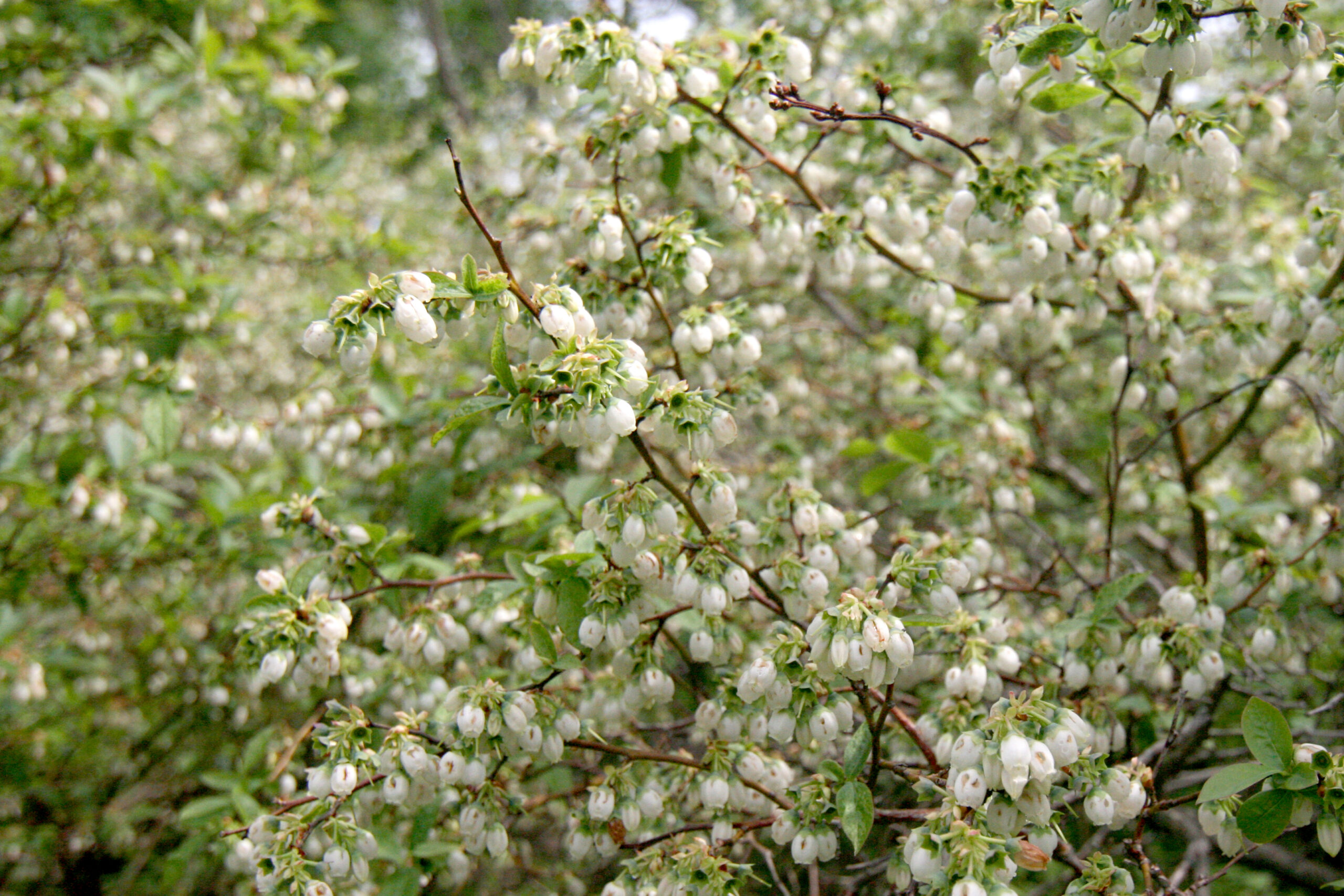At the grocery store, it’s easy to take fresh blueberries for granted. Packed within plastic cases, the jewel-like fruits are available year-round, almost without question. But a collection of blueberries at the Arnold Arboretum—that is to say, highbush blueberries (Vaccinium corymbosum), which are now flowering—provides a reminder of the not-so-distant time when blueberries were just pushing into the realm of viable commercial production.
Eight blueberry shrubs grow in an Arboretum planting along Meadow Road, and of these, seven are named cultivars received from a cranberry grower in Whitesbog, New Jersey. This grower, Joseph White, sent multiple shipments to the Arboretum between 1922 and 1929, but in reality, credit for these arrivals goes to his daughter, Elizabeth. Whitesbog, as the name implies, was the White’s family property, where Joseph established himself as one of the first commercial cranberry (Vaccinium macrocarpon) growers in the mid-nineteenth century. Wild highbush blueberries are common in this inland portion of New Jersey—a sandy landscape, known as the Pine Barrens, which is dominated by pitch pine (Pinus rigida). Because Elizabeth observed that highbush blueberries ripened before cranberries, generally in July or August, she surmised that blueberries could provide an ideal supplement to the family’s existing fruit production.
When Elizabeth encountered a 1910 United States Department of Agriculture report titled “Experiments in Blueberry Culture,” she immediately wrote to the author, Frederick Coville. He had noted that many blueberry trials failed owing to “misunderstanding of the soil requirements,” and because Elizabeth knew blueberries grew well throughout the Pine Barrens, she offered property at Whitesbog for additional field studies. Elizabeth then enlisted neighbors to comb through the surrounding woods, searching for blueberries that produced plumper fruit, and she offered payment according to size. These selections became the basis for a breeding program, and by 1921, Coville reported that more than 18,000 hybrids had been trialed on the “sandy, peaty, acid soil” at Whitesbog.

The Arboretum’s oldest remaining specimen from Whitesbog is a cultivar named ‘Dunfee’, which, like four other cultivars in our collection (‘Rubel’, ‘Harding’, ‘Sam’, and ‘Grover’), is actually a wild-collected selection, named for the neighbor who identified the original plant. The other two Whitsebog specimens, ‘Katherine’ and ‘Pioneer’, are hybrids made from crossing wild material, including plants Coville sourced in New Hampshire. Incidentally, ‘Pioneer,’ perhaps showing the impact of intentional breeding, stands full and robust in the Arboretum’s grouping, although ‘Dunfee’ took the prize for the densest constellation of white blossoms this spring.
While these specimens are the oldest cultivars of highbush blueberry now growing at the Arboretum, our oldest representatives of the species are located on Bussey Hill, near the entrance to the Explorers Garden. These plants (accession 1951*A and B) were collected by Jackson Dawson, the Arboretum’s first plant propagator, in 1883. Coville cited these plants in the opening salvo of his 1910 report. Dawson’s success, he argued, debunked the widespread notion that blueberries were impossible to transplant or cultivate. Now, more than a century later, Dawson’s achievement still holds true—and so, too, does the subsequent success at Whitesbog.
